As a home cook, I’ve always wondered about the difference between a French oven and a Dutch oven. Both are versatile kitchen tools that can be used for a variety of cooking methods such as braising, stewing, and baking.
While they may look similar, there are subtle differences between the two that can affect their performance in the kitchen.
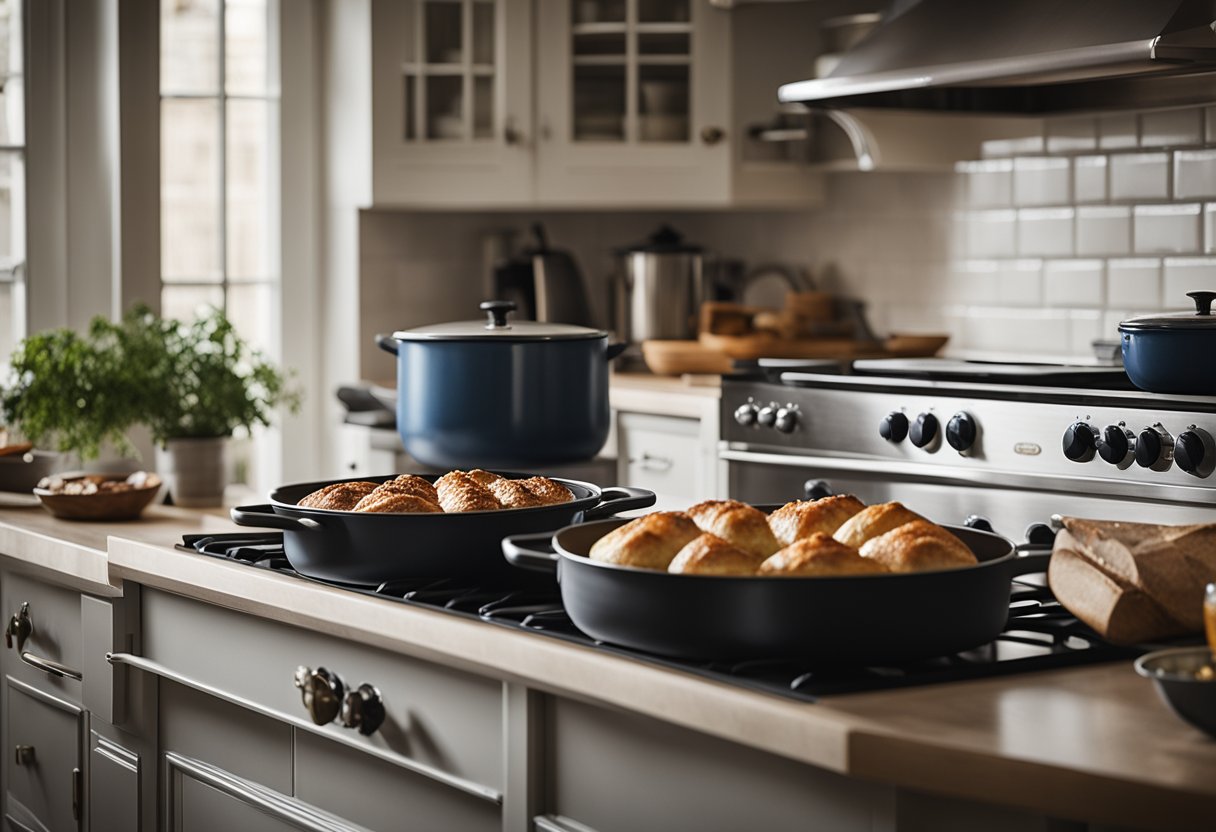
Understanding the differences between a Dutch oven and a French oven can help you decide which one to invest in and which one is best suited for your cooking needs.
From design and aesthetics to materials and durability, there are several factors to consider when choosing between the two.
In this article, I’ll explore the similarities and differences between Dutch and French ovens, as well as some notable brands and models to help you make an informed decision.
Key Takeaways
- Dutch ovens and French ovens are both versatile kitchen tools that can be used for a variety of cooking methods.
- The primary difference between a Dutch oven and a French oven is the enameled finish on the latter, which can affect its performance in the kitchen.
- When choosing between a Dutch oven and a French oven, consider factors such as design and aesthetics, materials and durability, and cooking time and temperature control.
Understanding Dutch and French Ovens
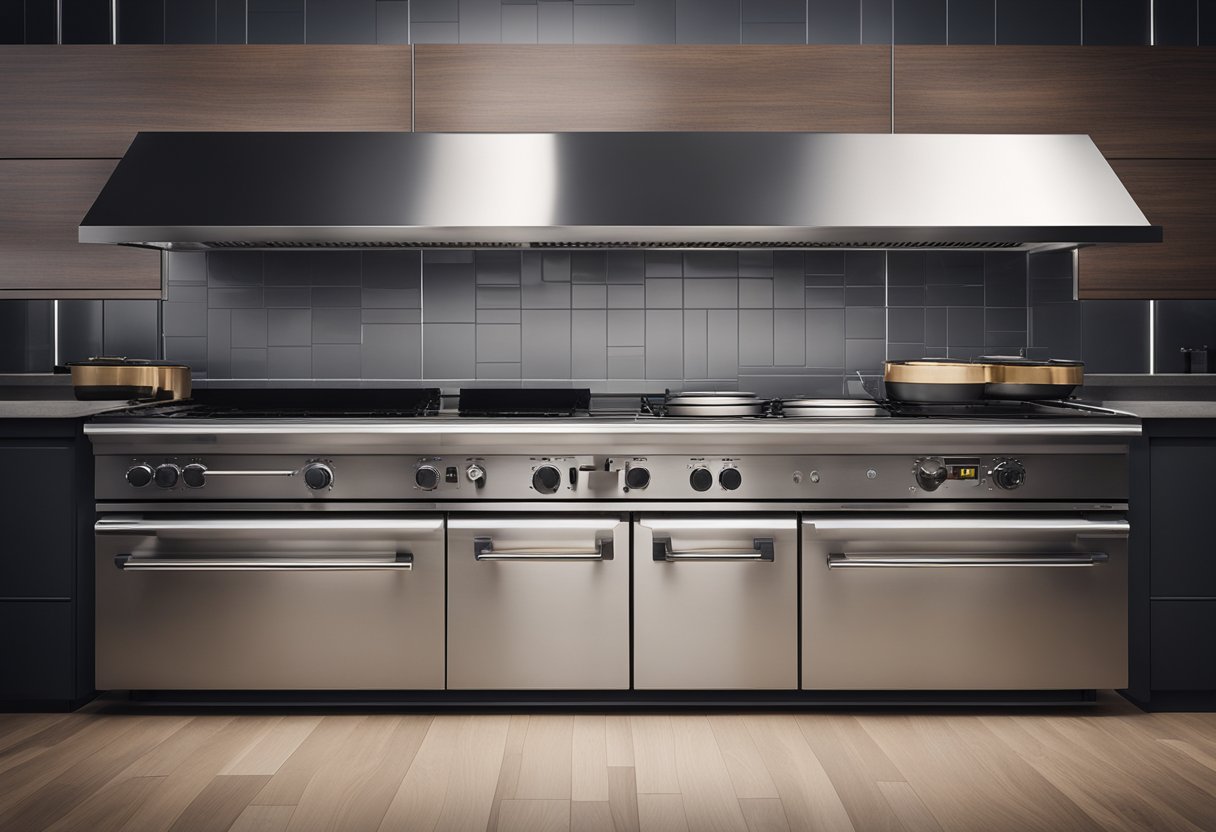
As a cookware enthusiast, I have come across many types of pots and pans in my cooking journey. Two of the most popular and versatile types of cookware are Dutch ovens and French ovens.
Both are made of cast iron and are great for slow cooking, braising, and baking. However, there are some differences between the two that are worth noting.
Dutch Ovens
Dutch ovens are essentially large, heavy pots with tight-fitting lids. They are usually made of pure cast iron, which develops a non-stick surface if seasoned properly.
Dutch ovens can be used both on the stove and in the oven, making them a versatile piece of cookware. They are great for slow cooking and braising, as they distribute heat evenly and retain heat well.
One thing to note about Dutch ovens is that they require seasoning to maintain their non-stick surface.
This involves coating the pot with oil and baking it in the oven, which creates a layer of polymerized oil on the surface of the pot. This layer protects the pot from rust and makes it non-stick.
French Ovens
French ovens, also known as cocottes, are similar to Dutch ovens in that they are made of cast iron and have tight-fitting lids.
However, French ovens have a porcelain enamel coating, which gives them a smooth surface rather than the seasoned cast iron finish of their Dutch counterparts. This coating makes them easier to clean and maintain, as they don’t require seasoning like Dutch ovens do.
French ovens are great for slow cooking and braising, as they distribute heat evenly and retain heat well. They also come in a variety of colors and designs, making them a stylish addition to any kitchen.
Differences Between Dutch and French Ovens
The main difference between Dutch and French ovens is the coating. Dutch ovens are made of pure cast iron and require seasoning to maintain their non-stick surface, while French ovens have a porcelain enamel coating that makes them easier to clean and maintain.
French ovens also come in a wider variety of colors and designs than Dutch ovens.
Another difference between the two is the lid design. While most Dutch ovens have a simple, flat lid, French ovens often feature small bumps or spikes on the underside of the lid.
These help to trap and redistribute moisture, minimizing evaporation and improving the cooking process.
In conclusion, both Dutch and French ovens are great pieces of cookware that are versatile and durable. The choice between the two ultimately comes down to personal preference and cooking style.
Design and Aesthetics
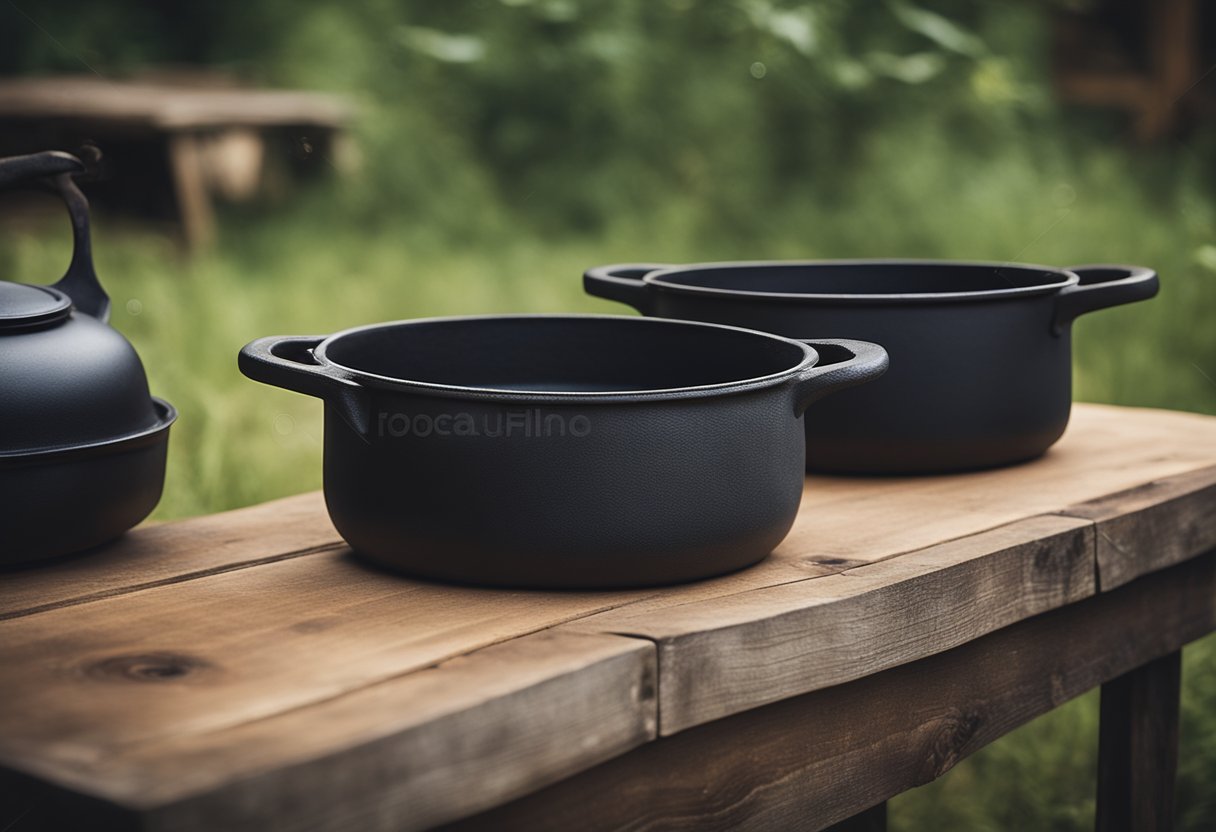
When it comes to design, both French and Dutch ovens have their unique characteristics. French ovens are typically round or oval in shape, while Dutch ovens can come in a variety of shapes and sizes.
The shape of the French oven helps to distribute heat evenly, while the Dutch oven’s shape is more versatile and can accommodate larger cuts of meat or more substantial dishes.
One of the most significant differences between the two is the lid. French ovens often feature small bumps or spikes on the underside of the lid, which helps to trap and redistribute moisture, minimizing evaporation and improving the cooking process. In contrast, most Dutch ovens have a simple, flat lid.
Another difference is the color and aesthetics. French ovens often come in bright, bold colors, adding a pop of color to any kitchen. Dutch ovens, on the other hand, tend to be more rustic and traditional, often featuring brass or glass accents.
When it comes to manufacturers, both French and Dutch ovens are made by reputable brands. Le Creuset is a well-known manufacturer of French ovens, while Lodge is a popular brand for Dutch ovens.
Overall, the design and aesthetics of French and Dutch ovens are unique and depend on personal preference.
Whether you prefer the colorful and round design of a French oven or the rustic and versatile design of a Dutch oven, both are excellent choices for any home cook.
Versatility in Cooking
When it comes to versatility in cooking, both French and Dutch ovens are excellent choices. They are ideal for making stews, braising meats, and cooking soups.
The heavy lids on these pots help to lock in moisture, making them perfect for slow-cooking dishes.
In addition to moist cooking methods, Dutch and French ovens can also be used for baking bread, roasting meats, and frying foods. The heavy cast iron construction of these pots makes them ideal for outdoor cooking and camping.
One of the benefits of using a French or Dutch oven is the ability to develop rich flavors in your dishes. The cast iron construction of these pots helps to evenly distribute heat, resulting in perfectly cooked meats, vegetables, and sauces.
Another advantage of using a French or Dutch oven is the ability to use them as a serving dish. These pots are perfect for bringing soups and stews straight to the table, keeping your food warm and ready to serve.
Overall, the versatility of Dutch and French ovens makes them a must-have for any home cook. Whether you’re making soups and stews, searing meats, or baking bread, these pots are up to the task.
Materials and Durability
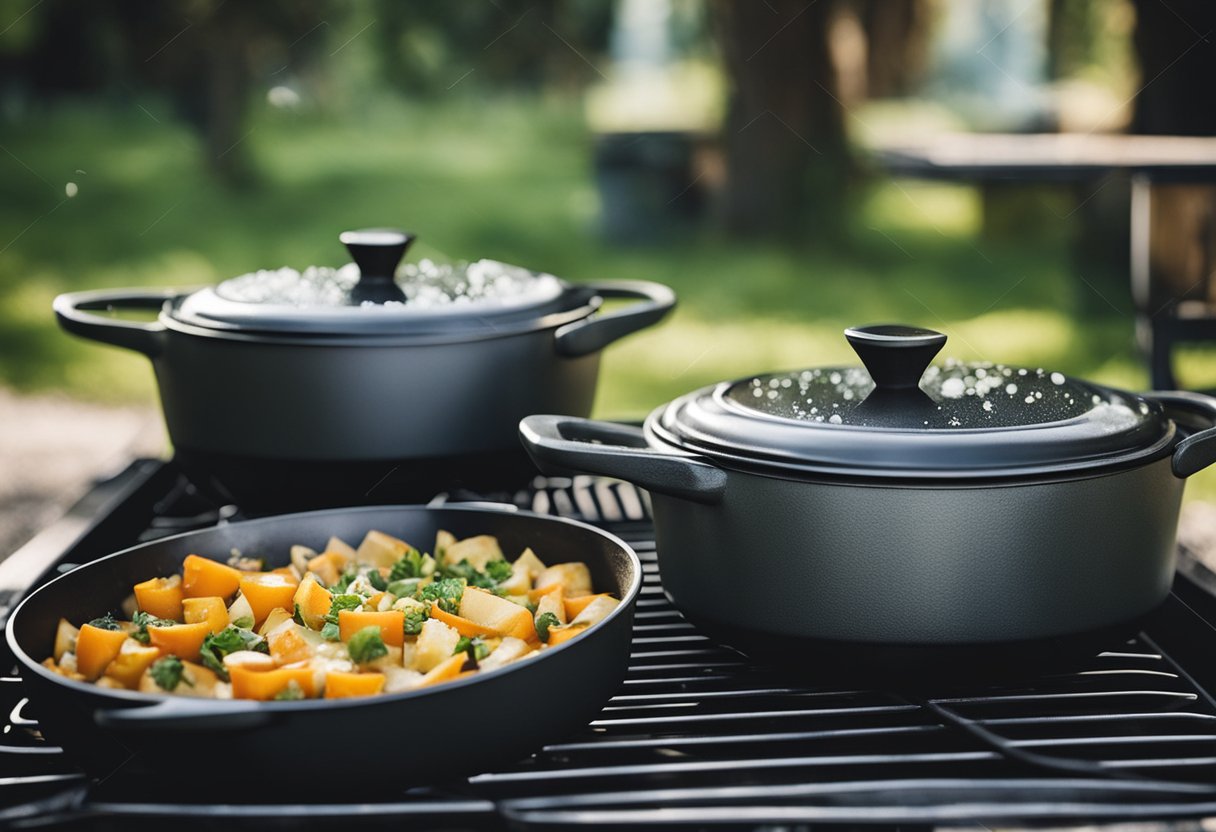
When it comes to materials, both French and Dutch ovens are made of cast iron. However, there is a difference in the coating.
While traditional Dutch ovens are made of bare cast iron, French ovens are coated with enamel, which is a type of porcelain coating. This enamel coating makes French ovens more durable than their Dutch counterparts, as it prevents rust and chipping.
Cast iron is known for its durability, and both Dutch and French ovens are built to last. However, bare cast-iron Dutch ovens require seasoning to create a nonstick surface, while enamel-coated French ovens don’t.
This means that French ovens are easier to clean and maintain, as they don’t require the same level of care as bare cast-iron Dutch ovens.
In addition to cast iron, some Dutch and French ovens are made of other materials like stainless steel or aluminum. However, cast iron is still the most popular material for these types of ovens due to its durability and ability to retain heat.
Overall, both Dutch and French ovens are durable and long-lasting. However, the enamel coating on French ovens gives them an edge in terms of durability and ease of maintenance.
Maintenance and Cleaning
Maintaining and cleaning your French or Dutch oven is essential to ensure its longevity and performance.
Here are some tips for keeping your oven in top condition:
Seasoning
Cast iron Dutch and French ovens need to be seasoned to create a non-stick surface and protect them from rust. To season your oven, first, wash it with warm, soapy water and dry it thoroughly.
Then, apply a thin layer of vegetable oil to the entire surface of the oven, including the lid and handles. Place it in a preheated oven at 375°F for an hour.
After an hour, turn off the oven and let it cool down. Repeat this process every few months or as needed.
Maintenance
To maintain your oven, avoid using metal utensils, which can scratch the surface and damage the seasoning. Instead, use wooden or silicone utensils.
Also, avoid using harsh detergents or abrasive sponges, which can strip the seasoning and damage the non-stick surface. Instead, use mild dish soap and a non-abrasive sponge to clean the oven.
Cleaning
Cleaning your oven after each use is essential to prevent food buildup and maintain the non-stick surface. To clean your oven, first, let it cool down completely.
Then, use a paper towel or a soft brush to remove any food residue. If there are stubborn stains, add some warm water and a small amount of mild dish soap to the oven and let it soak for a few minutes.
Then, use a non-abrasive sponge to clean the oven. Rinse it thoroughly with water and dry it with a clean towel.
Dishwasher
While some French and Dutch ovens are dishwasher safe, it’s best to avoid using the dishwasher as it can strip the seasoning and damage the non-stick surface. Instead, hand wash your oven with mild dish soap and a non-abrasive sponge.
Non-Stick Surface
The non-stick surface of a French oven is created by a porcelain enamel coating, while a Dutch oven’s non-stick surface is created by seasoning the cast iron.
Both surfaces require proper maintenance to maintain their non-stick properties. Avoid using metal utensils, harsh detergents, and abrasive sponges, which can damage the non-stick surface.
Expensive
French ovens are generally more expensive than Dutch ovens due to their porcelain enamel coating and higher quality construction. However, both types of ovens are durable and can last for decades with proper care and maintenance.
Rust
Cast iron ovens can rust if not properly maintained. To prevent rust, always dry your oven thoroughly after washing it and avoid leaving it in a damp or humid environment.
If you do notice rust, use a non-abrasive sponge to remove it and then re-season the oven to restore its non-stick surface.
Cooking Time and Temperature Control
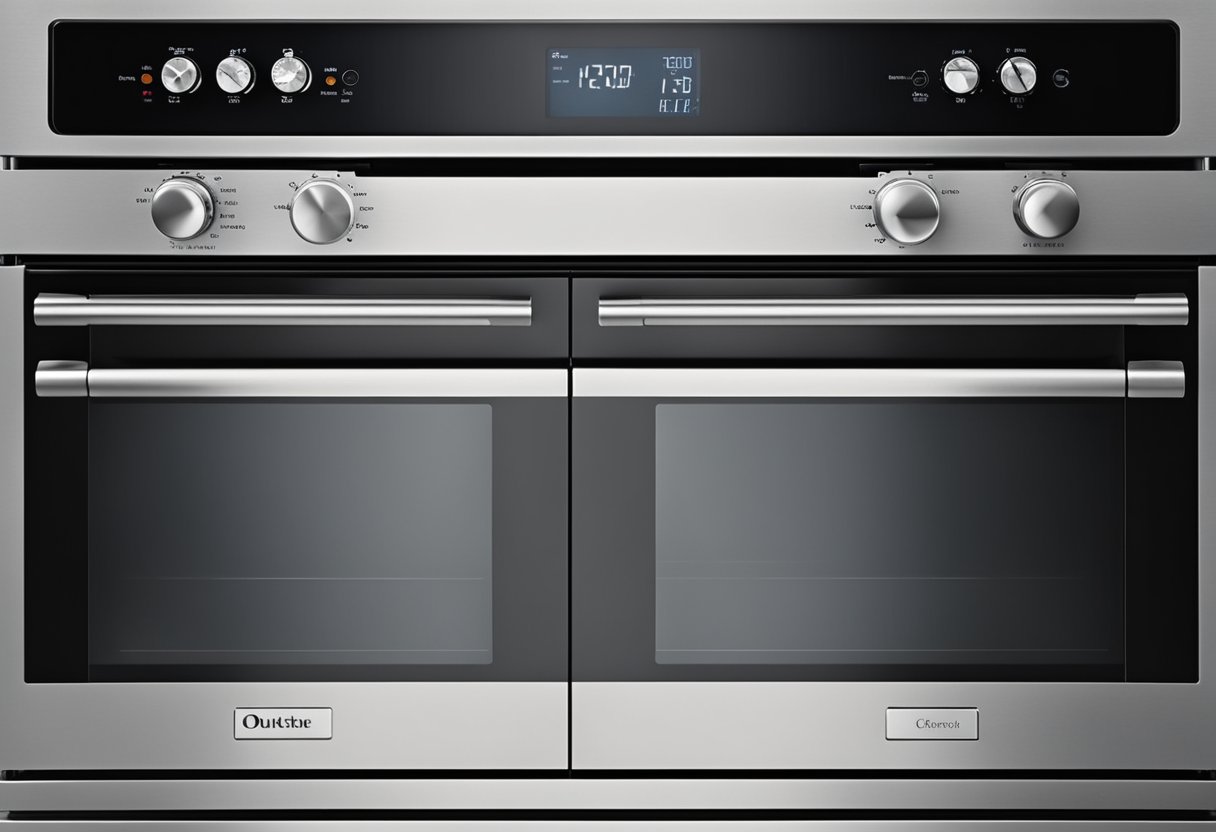
When it comes to cooking with a French oven or a Dutch oven, it’s important to know how to control the temperature and cooking time to achieve the best results.
Both types of ovens are great for slow cooking methods, such as braising, stewing, and roasting, but they require slightly different techniques.
One of the main differences between French and Dutch ovens is that French ovens are made of enameled cast iron, while Dutch ovens are often made of raw cast iron.
This means that French ovens are better at retaining heat and distributing it evenly, making them ideal for cooking dishes that require high temperatures or high heat.
When using a French oven, I recommend preheating the oven to the desired temperature before adding the dish. This will ensure that the oven is evenly heated and that the dish will cook evenly.
The enameled surface of the French oven also makes it easier to clean and maintain, as it doesn’t require seasoning like a raw cast iron Dutch oven.
On the other hand, Dutch ovens are better at retaining moisture and are often used for dishes that require longer cooking times, such as slow-cooked stews and braises.
When using a Dutch oven, I recommend cooking over a low flame or in the oven at a low temperature for several hours to allow the flavors to develop and the meat to become tender.
Regardless of whether you’re using a French or Dutch oven, it’s important to monitor the cooking time and temperature to ensure that the dish is cooked to perfection.
I recommend using a meat thermometer to check the internal temperature of the meat, as this will give you a more accurate reading than simply relying on the cooking time.
In summary, both French and Dutch ovens are great for slow cooking methods, but they require slightly different techniques to achieve the best results.
French ovens are better at retaining and distributing heat, while Dutch ovens are better at retaining moisture and require longer cooking times. By monitoring the cooking time and temperature, you can ensure that your dish is cooked to perfection every time.
Notable Brands and Models
When it comes to Dutch and French ovens, there are several notable brands and models that are worth considering.
Here are some of the most popular ones:
Le Creuset
Le Creuset is a well-known French brand that produces high-quality enameled cast iron cookware. Their Dutch ovens are some of the most popular on the market and come in a variety of sizes and colors.
Le Creuset Dutch ovens are known for their durability, even heat distribution, and versatility. They can be used on the stovetop or in the oven and are perfect for making soups, stews, casseroles, and more.
Staub
Another popular French brand is Staub. Their Dutch ovens are similar to Le Creuset’s but have a slightly different design.
Staub Dutch ovens have a more textured interior, which helps to promote browning and prevents sticking. They also have a unique self-basting system that helps to keep food moist and tender.
Lodge
Lodge is an American brand that produces high-quality cast iron cookware. Their Dutch ovens are affordable and come in a variety of sizes.
Lodge Dutch ovens are known for their durability and even heat distribution. They can be used on the stovetop or in the oven and are perfect for making soups, stews, and casseroles.
Cuisinart
Cuisinart is a well-known American brand that produces a variety of kitchen appliances and cookware. Their French ovens are similar to Dutch ovens but have a slightly different design.
Cuisinart French ovens have a wider base and shorter sides, which makes them perfect for braising and slow cooking. They also have a tight-fitting lid that helps to lock in moisture and flavor.
Overall, when it comes to choosing between a Dutch oven and a French oven, it really comes down to personal preference. Both types of cookware are versatile and can be used to make a variety of dishes.
Whether you choose a Le Creuset Dutch oven or a Lodge Dutch oven, you can be confident that you are investing in a high-quality piece of cookware that will last for years to come.
Differences and Similarities
When it comes to cooking, Dutch ovens and French ovens are two of the most popular types of cookware. While they may look similar, there are some key differences and similarities between the two that are worth noting.
Differences
The main difference between Dutch ovens and French ovens is in the material and coating. Dutch ovens are typically made of raw cast iron, which develops a nonstick surface if seasoned properly.
On the other hand, French ovens are usually made of cast iron with a porcelain enamel coating. This coating makes them easier to clean and maintain, but it also means they are not as versatile as Dutch ovens.
Another difference between the two is in their design. While most Dutch ovens have a simple, flat lid, French ovens often feature small bumps or spikes on the underside of the lid.
These help to trap and redistribute moisture, minimizing evaporation and improving the cooking process.
Similarities
Despite their differences, Dutch ovens and French ovens have some similarities as well. Both types of cookware are great for slow-cooking methods like braising and stewing, and they can be used on both the stove and in the oven.
They are also great for making soups and other dishes that require a long cooking time.
Another similarity between the two is in their heat retention and distribution. Both Dutch ovens and French ovens are made of cast iron, which is known for its ability to retain and distribute heat evenly.
This makes them ideal for cooking dishes that require a consistent temperature throughout the cooking process.
In conclusion, while there are some key differences between Dutch ovens and French ovens, they both have their own unique advantages and can be used interchangeably in many cases.
It ultimately comes down to personal preference and what type of cooking you plan on doing.
Investing in Dutch and French Ovens
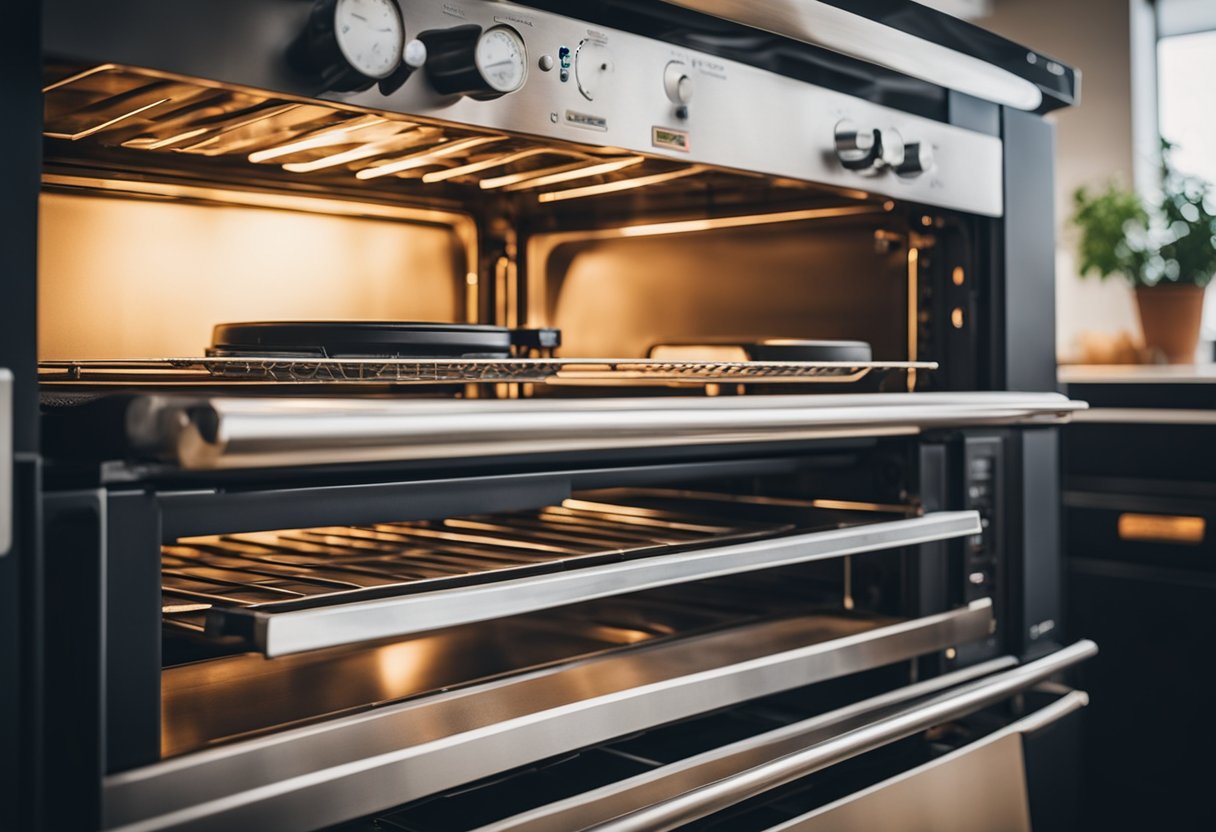
When it comes to investing in cookware, Dutch and French ovens are two popular options that are worth considering. Both types of ovens are heavy and durable, making them a long-term investment that can last a lifetime with proper care.
One of the primary advantages of Dutch and French ovens is their versatility in cooking options. They can be used for a wide range of cooking techniques, including braising, stewing, frying, and even baking bread.
The ability to move from stovetop to oven also makes them great for one-pot meals.
When it comes to weight, Dutch and French ovens are heavy, which is a testament to their durability and quality.
While this can make them difficult to move around the kitchen, it also means that they distribute heat evenly and retain heat well, making them ideal for slow-cooking dishes.
In terms of investment, Dutch and French ovens can be expensive, but they are worth it in the long run. They are built to last and can be passed down through generations.
Additionally, they can add a touch of elegance to any kitchen with their classic design and stunning colors.
Overall, investing in a Dutch or French oven is a wise choice for any home cook. They offer a range of cooking options, are built to last a lifetime, and can add a touch of sophistication to any kitchen.
Related posts:
- What Is the Minimum Hot Holding Temperature for Pizza
- How to Make Tandoori Naan Pizza: A Step-by-Step Guide
Frequently Asked Questions
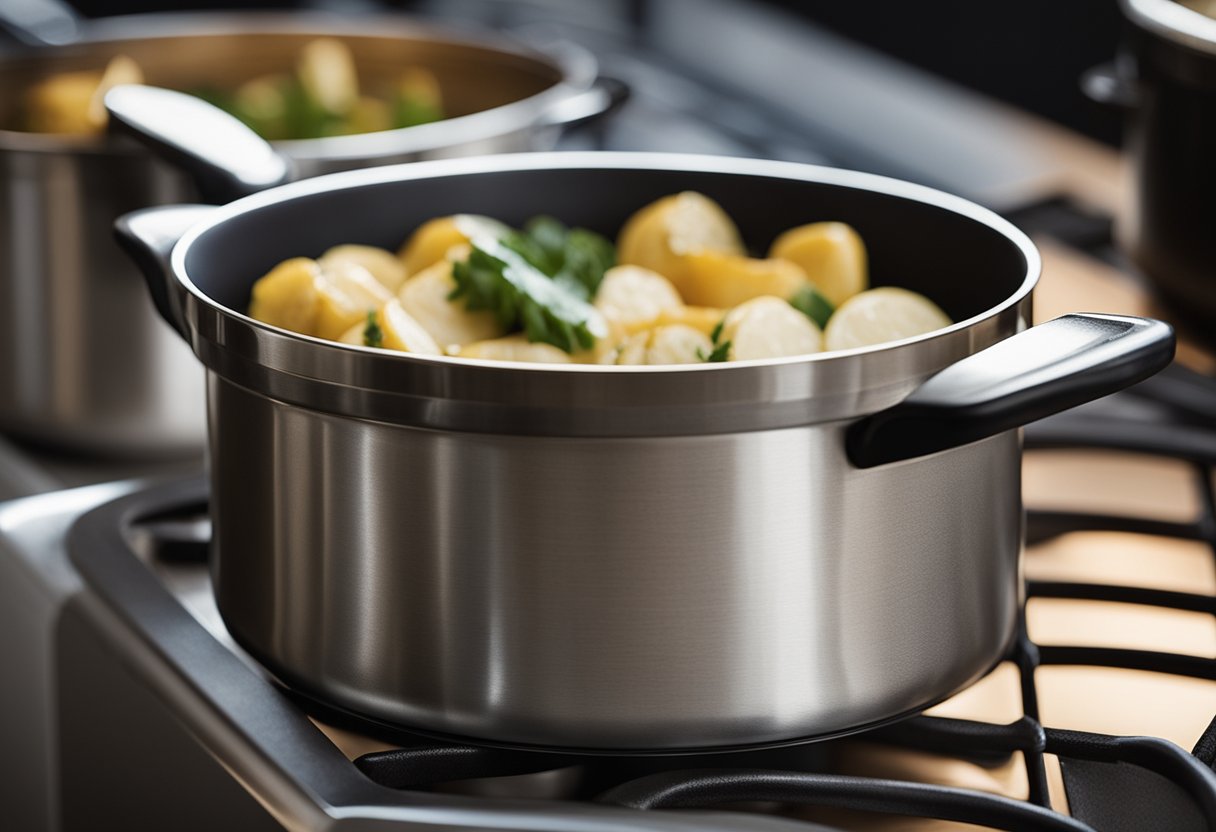
What are the differences between a French oven and a Dutch oven?
A French oven, also known as a cocotte, is a type of Dutch oven that is made of cast iron and coated with enamel. The enamel coating makes it non-reactive to acidic ingredients, easy to clean, and prevents rusting.
A Dutch oven, on the other hand, is also made of cast iron, but it does not have an enamel coating. Dutch ovens are seasoned with oil to create a natural non-stick surface and can be used for both indoor and outdoor cooking.
What are some popular French oven brands?
Some popular French oven brands include Le Creuset, Staub, and Emile Henry. These brands are known for their high-quality, durable, and stylish French ovens that come in a variety of colors and sizes.
What are the uses of a French oven?
A French oven is a versatile kitchen tool that can be used for a variety of cooking methods, such as braising, stewing, roasting, baking, and frying.
It is ideal for slow-cooking dishes that require even heat distribution and retention. A French oven can be used on the stovetop, in the oven, or even on the grill.
Can a French oven be used in the oven?
Yes, a French oven can be used in the oven. In fact, it is designed to be used in the oven as well as on the stovetop. The enamel coating on a French oven makes it safe to use in the oven at high temperatures.
Is a Le Creuset French oven the same as a Dutch oven?
A Le Creuset French oven is a type of Dutch oven that is made of cast iron and coated with enamel. It is similar to other Dutch ovens in terms of its shape and function, but it is distinguished by its high-quality construction, durability, and stylish design.
Le Creuset is a well-known brand that is synonymous with quality French ovens.
Why are French Dutch ovens more expensive than regular Dutch ovens?
French Dutch ovens are more expensive than regular Dutch ovens because of the high-quality construction, durability, and stylish design that they offer.
They are made of high-quality cast iron and coated with enamel, which makes them non-reactive to acidic ingredients and easy to clean. French Dutch ovens are also designed to last for years, which makes them a worthwhile investment for serious cooks.




